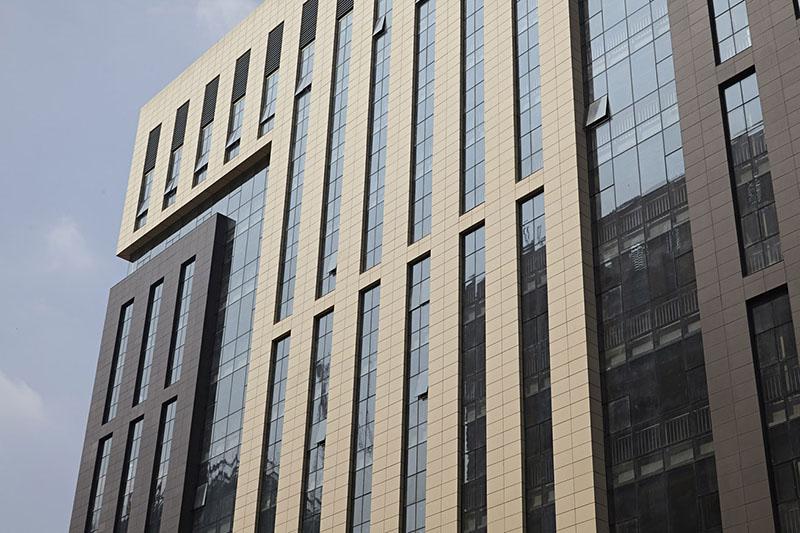Terracotta panels are calcined at high temperature from wet-extruded natural clay. The surface of curtain wall is anti-static so that it is not easy to gather dust. Generally, the rain washes off the dust from the terracotta panel surface. So the expenses for cleaning and maintenance of terracotta curtain walls are low, especially for high-rising buildings. However, the following things should be considered in order to keep and show the best visual effect for terracotta curtain walls.
 Ⅰ. Pre-installation Tips for Terracotta Curtain Walls
Ⅰ. Pre-installation Tips for Terracotta Curtain Walls
Except for precast terracotta curtain wall, most terracotta curtain walls are installed at the project site.
1. It’s advised to install terracotta curtain walls during the final construction stage of external walls. If tainted by cement or paint, the terracotta panel will be severely damaged and not easy to clean because cement is high-alkaline and paint is high-acid.
2. Protective
measures should be taken during installation of terracotta panels. Terracotta
panels should be covered while welding is being done. If welding slags splash
onto the surface of terracotta panels to leave spots, please use welding slag
cleaning agent to remove the slags. Rinse with clean water immediately after
removing the slags.
3. Wash the
entire curtain wall after the installation of terracotta panels is completed.
After washing, the different portions of curtain wall dry at a varying speed,
causing the terracotta panels to show colors to a different degree. Depending
on the climate in a specific region, terracotta panels can become completely
dry (i.e. with the same color intensity) after consecutively 5-10 sunny days.
Ⅱ. Daily Cleaning of Terracotta Curtain Wall
As mentioned above, terracotta curtain wall can be self-cleaned to a certain degree. But regular cleaning is still required for the curtain wall. The frequency of cleaning depends on the climate and environmental conditions in the area where the building is located. If dust and taint accumulate over time on the surface of the terracotta curtain wall, use flowing clean water to rain and clean the surface from top to down with a brush. No cleaning agent is needed. It is advised to use hard brush to clean the surface, because the terracotta panels have rough surface due to the special production process and if a rag is used it is easy to leave lint on the surface of terracotta panels.
Ⅲ. Removal of Special Stains
Terracotta panel has a water absorption rate of 3-10%, so that stains or oily substance is easy to penetrate into the panels. Stains must be cleaned in a timely manner to avoid prolonged stay of stains on the panel surface that makes it unable to clean.
1. If the
terracotta panel surface has stains like handprint, greasy dirt or oily pen
stain, please remove the dust from the panel surface before applying cleaning
agent (such as stone cleaning agent, household cleaning agent) to the stained
area. Then rinse with clean water.
2. If the
terracotta panel surface has graying/whitening phenomenon, mix water with
10-20% oxalic acid to replace cleaning agent. For certain severely
grayed/whitened spot, a eraser can be used.
3. If the terracotta panel surface is polluted by cement or paint, it is generally advised to use at least 280 grit waterproof abrasive paper to dip water and then gently wipe the surface. Rinse with clean water.
Ⅳ. Dry Treatment Using Stain-proof Sealant
In some LOPO projects, a durable (usually lasting about 10 years), effective and air-permeable impregnation sealant is also used in order to prevent water from penetrating and to reduce efflorescence on the surface of terracotta panels.
All rights reserved. No part of this article may be reproduced or retransmitted in any form without prior permission of www.lopochina.com